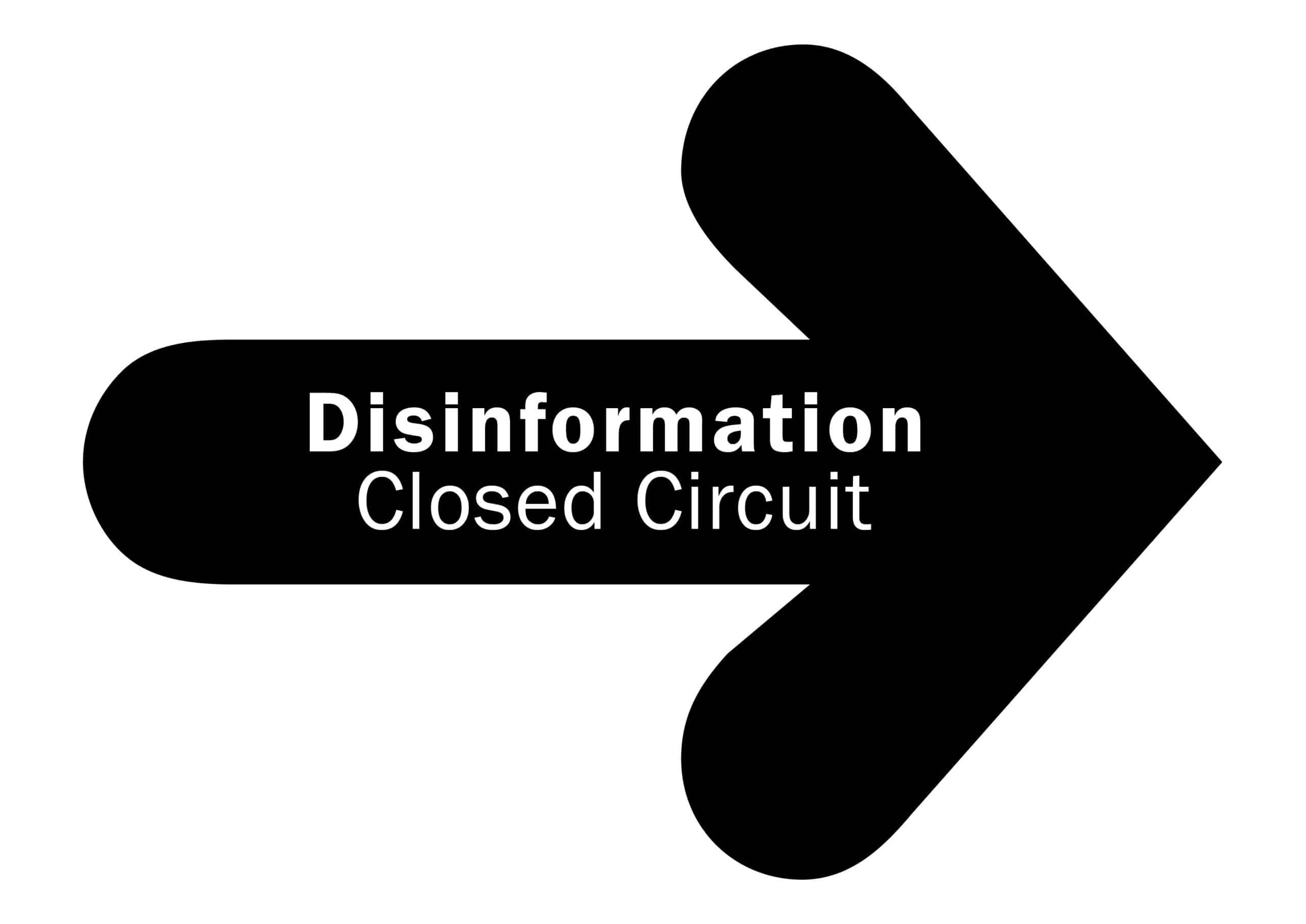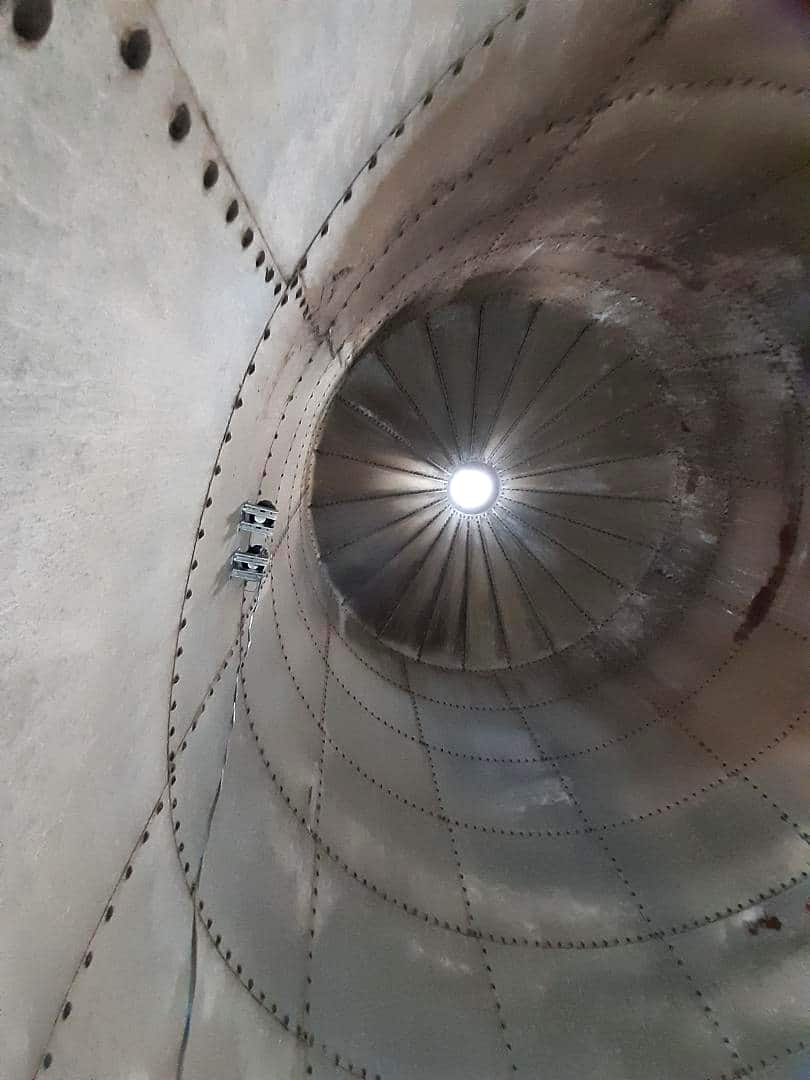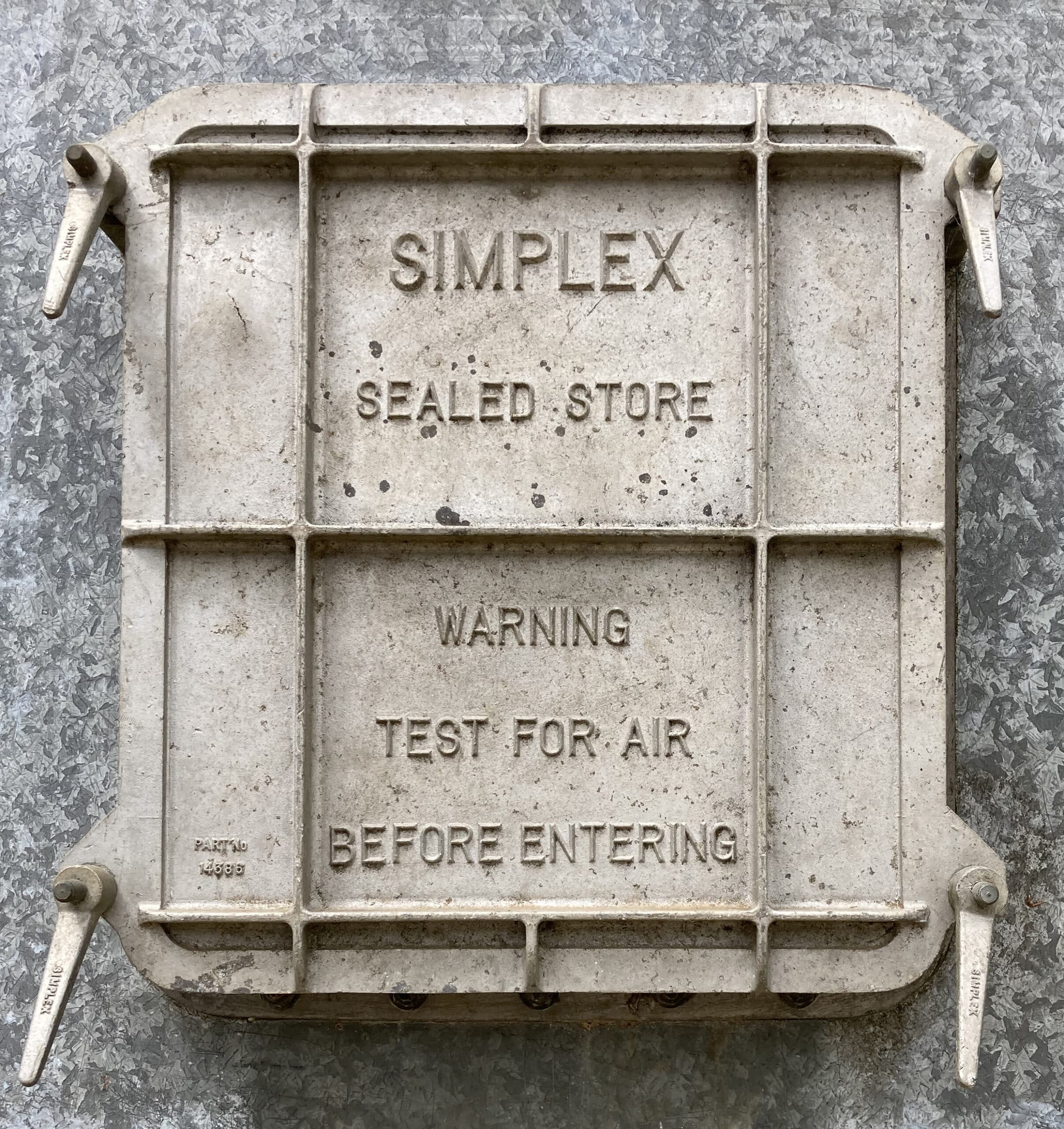Disinformation: Closed Circuit

If we sit and talk in a dark room, words suddenly acquire new meanings and different textures. They become richer, even, than architecture, which Le Corbusier rightly says can best be felt at night.
– Marshall McLuhan, Understanding Media, 1964.
‘Architecture is the simplest means of articulating time and space, of modulating reality and [of] engendering dreams’ [1], and, perhaps paradoxically, in the silo at Shatwell, a familiar architectural form is re-purposed to create a kind of strange laboratory, within which, through the manipulation of architectural acoustics, of auditory and haptic sensations, the formal aesthetics and symbolism of pure geometry interact with (equally primal) tactile resonances and symbolism, to evoke long-forgotten reflexes, sense memories, and (arguably, to some extent) even dreams. Extrapolating the assertion that ‘architecture in general is frozen music’ [2], the installation at Shatwell is created not only within the building, but by the building, with the building itself functioning as a massive loudspeaker, as a kinetic artwork, and as a musical instrument, generating ‘sound’ which is (in part) heard through the fingertips, drawing visitors into an amniotic sound world of gently pulsing vibration and breath-like rhythms.


In geometric terms, the curvilinear surface of a cylinder is effectively infinite, while in projective geometry, a cylinder can be defined as a cone whose apex rests at infinity [3] – a grain silo is in effect a giant tin of beans, and every child who’s built a tin-can-telephone is familiar with at least some of the acoustic properties of plate steel. ‘In every art it is the most elementary and primitive means that achieve the most profound and beautiful effects’ [4], and Closed Circuit – the sound installation by artist project Disinformation – uses simple microtonal tuning techniques to create a rhythmically active and dynamic sound mass, which oscillates around a core frequency of 40Hz. This is, in neurological terms, the exact frequency of so-called Gamma waves which is most strongly associated with the integration of visual consciousness and dreams [5][6], and is the exact frequency most used in the field of vibro-acoustic therapy [7].
‘We move within a closed landscape whose landmarks constantly draw us toward the past. Certain shifting angles, certain receding perspectives, allow us to glimpse original conceptions of space, but this vision remains fragmentary. It must be sought in the magical locales of fairy tales and Surrealist writings: castles, endless walls, little forgotten bars, mammoth caverns, casino mirrors…’ [8]
‘Arnold began telling Alan about his recurrent childhood dream, or nightmare rather, in which he felt himself suspended in absolutely empty space while a strange noise would start, growing ever louder, until he woke up in a sweat. Alan asked what kind of noise it was, but Arnold could not describe it… Alan imagined the old hangar on the RAF camp… and made up a science fiction story… in which the hangar was itself a brain.’ [9]

Closed Circuit (2021) has been commissioned and installed at Shatwell Farm as part of the exhibition Sounds & Shapes curated by Matchett & Page. The installation is open to the public at weekends, 11.00–17.00, from Saturday 17 July until Sunday 1 August 2021. Find full details, here.
Notes
- Ivan Chtcheglov, ‘Formulary for a New Urbanism’, Internationale Situationniste 1, October 1953.
- Friedrich von Schelling, Philosophie der Kunst, 1802.
- https://en.wikipedia.org/wiki/Cylinder
- Rudolf Arnheim, Radio, 1936.
- Francis Crick and Christof Koch, ‘Towards a Neurobiological Theory of Consciousness’, Seminars in the Neurosciences, vol. 2, 1990.
- Rodolfo Llinás and Urs Ribary ‘Coherent 40Hz Oscillation Characterizes Dream State in Humans’ PNAS, vol. 90, 1993.
- https://en.wikipedia.org/wiki/Vibroacoustic_therapy
- Chtcheglov, ‘Formulary for a New Urbanism’.
- Andrew Hodges, Alan Turing, The Enigma, 1983.
